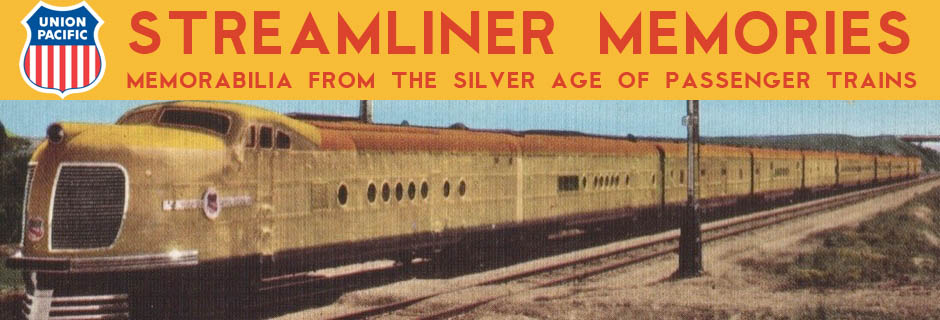The California Zephyr was, according to numerous advertisements, “the most talked about train in the country.” One or two ads even claimed that it was “the best-loved train in the country.” We can’t verify these claims today, but we can say that it was probably the best-advertised train in the country, at least as far as magazine ads go.
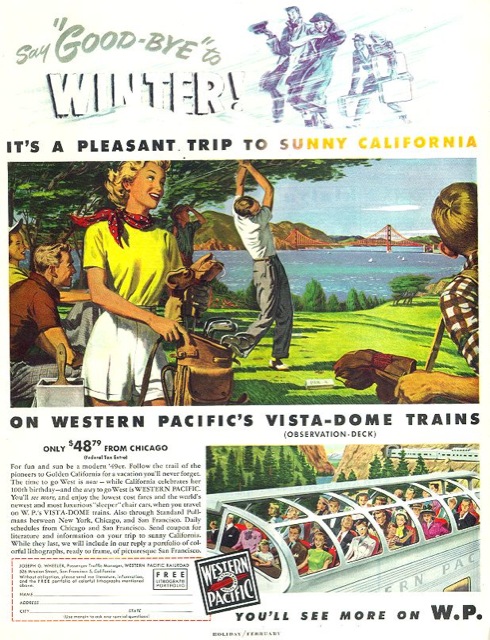
The first National Geographic ad for the California Zephyr didn’t even mention the Zephyr by name, instead just referring to “Western Pacific’s Vista-Dome Trains.” The ad was in the February 1949 issue, and the Zephyr would not make its inaugural run until March 20, 1949. In the meantime, the Burlington-Rio Grande-Western Pacific Exposition Flyer incorporated vista domes and other CZ cars as they arrived from Budd. While the smaller illustration in this ad shows the vista domes in the Feather River Canyon, the larger one focuses on the Lincoln Park Golf Course in San Francisco. Click any image to download a larger version.
Between February 1949 and February 1965, I’ve found nearly 40 full-page ads in National Geographic, as well as many more in Saturday Evening Post, Life, Holiday, and several other magazines. By comparison, I count only a handful of ads for the City of Los Angeles, Super Chief, or other major trains of the day.
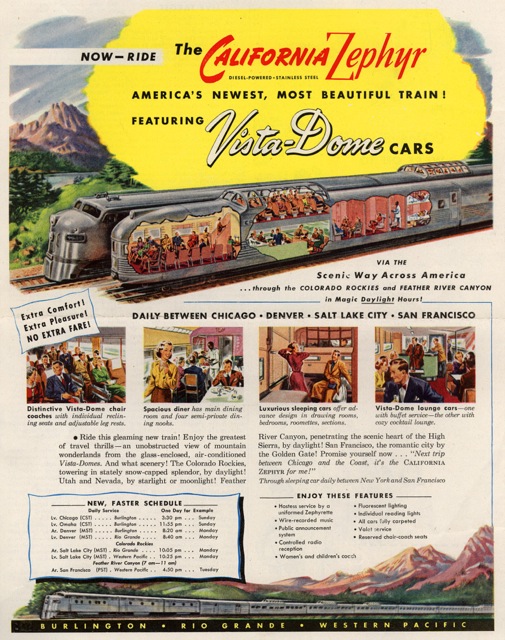
My collection of National Geographic doesn’t include all issues from 1949 so I’m not sure if this ad appeared in that magazine. This particular ad is from the April, 1949 Holiday magazine and shows generic Diesels, probably because the railroads hadn’t settled on color schemes when the illustration was drawn.
The reason is simple. Big railroads such as the New York Central and Union Pacific had lots of trains to advertise, and so placed few ads dedicated to a single train. But California Zephyr partner Western Pacific pretty much had just the one train, and it alone placed 25 of the 40 Nat Geo ads I’ve found. The Rio Grande and Burlington had other trains, but the California Zephyr was their premiere train, so they joined with Western Pacific to place another 15 ads.
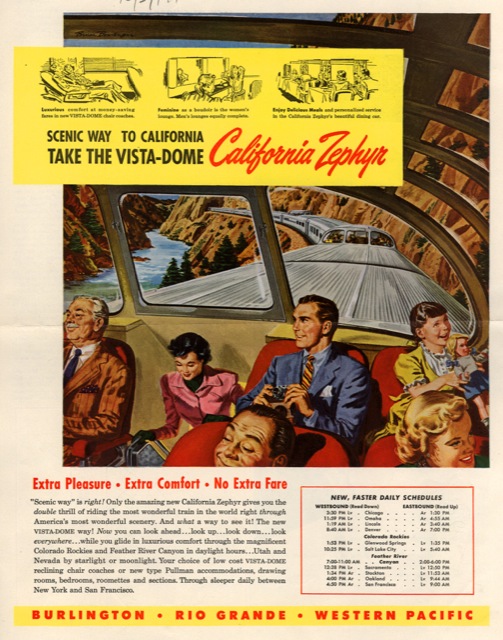
This ad appeared in an October, 1949, Saturday Evening Post and (in a slightly different version) in the October National Geographic. Unlike the previous two ads, this one focuses on the scenery, as it should. Note the significant exaggeration in the height of the dome windows.
To present these ads on this blog, I’ve divided them into five categories: ads based on color illustrations; ads based on a single large photo; story-board ads based on many small photos or graphics; cartoon ads; and ads placed by other companies seeking to bask in the reflected glory of the stainless steel Zephyr. This post, obviously, is dedicated to the illustrations, many of which were done by an artist named Bruce Bomberger, who worked for the San Francisco firm of Patterson & Hall. Bomberger also did work for Chevrolet, Matson Lines, and many other companies, and his portrayals of the Marlboro Man, though difficult to find on line, helped that become the country’s best-selling cigarette.
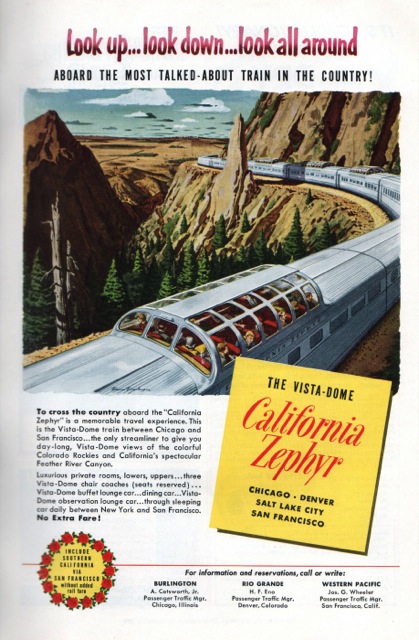
An ad in the March, 1952 National Geographic shows the California Zephyr descending Colorado’s Front Range into Denver. Most photos of this scene show the train ascending, when the sun would be on the train, but the illustrator used artistic license (or assumed the train was 12 hours late) to show the morning sun on a train scheduled to arrive at this spot in the late afternoon.
One reason they used illustrations instead of photos early in the train’s history is that no photos of the complete train were available until after service began. The first three ads shown above all date from this period. But the railroads continued to use illustrations in ads from time to time, either to show events not likely to be caught on camera (such as morning sun on an afternoon train, above) or to illustrate both interiors and exteriors unmarred by tinted glass (below) or simply to give a warm, homey feeling that might not be possible with a camera.

This ad was in the November, 1955 Sunset magazine. In 1954, ads bragged that the Zephyr was the only vista-dome train between Chicago and San Francisco, but by 1955 the Santa Fe had introduced a dome car to the San Francisco Chief, so this ad specifies that the Zephyr is the only train to Chicago (from California) with five vista-domes.
Except for the first, pre-Zephyr ad, all of the ads with illustrations list all three railroads and invite readers to write to a Chicago address–meaning the Burlington–for more information. Ads placed by Western Pacific alone urged readers to write to an address in San Francisco.
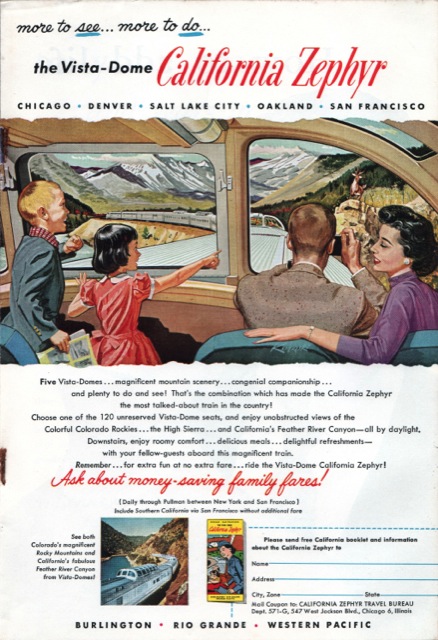
This January, 1957 National Geographic ad seems to be the last one relying on an illustration rather than photos. It shows the California Zephyr somewhere in Colorado as well as a smaller photo of the train in the Feather River Canyon. Note that the dome windows are a lot less exaggerated than in the earlier illustrations, but the locomotives are still generic silver when in fact they would be Rio Grande yellow. This particular illustration is signed by someone named Komorski, who is otherwise unknown.
